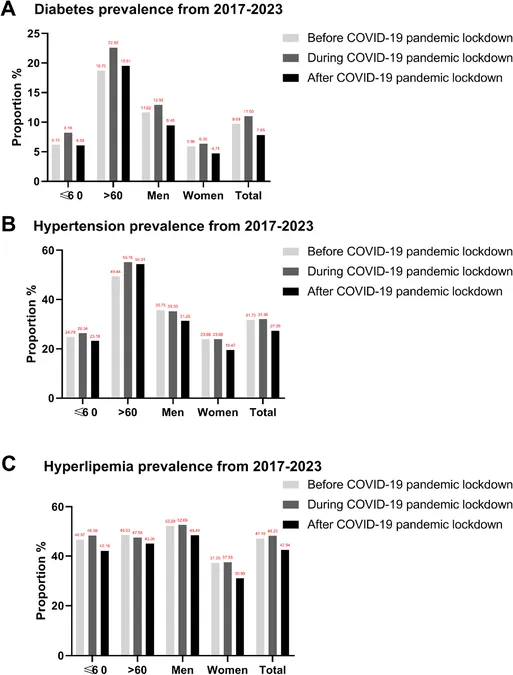
Unlocking Better Health: The BREAK2 Study on Reducing Sedentary Time
2025-05-25
Author: Wei
Revolutionizing Sedentary Behavior: The BREAK2 Study Overview
The BREAK2 study is set to redefine health strategies by exploring how short breaks from sitting can significantly enhance cardiometabolic health in adults. This innovative research, taking place at Columbia University Irving Medical Center, employs an adaptive design to identify the optimal frequency and duration of these breaks to maximize benefits such as lower blood pressure and stabilized glucose levels.
How It Works: The Study Design
Participants will engage in two separate 8-hour visits—one focused on sedentary breaks (the intervention) and another with uninterrupted sitting (the control). The setup allows each participant to experience a variety of break combinations, each randomly assigned from 25 possible options, balancing time intervals and durations.
The Science Behind It: Measuring Impact
The primary goal of BREAK2 is to observe how effective varying break doses are in yielding positive cardiometabolic responses. Successful doses will be those that lead to a response rate exceeding 60%, monitored through vital indicators such as blood pressure and glucose levels. Additionally, researchers will also assess safety and participant comfort during these breaks.
Eligibility and Participant Insights
To join the study, adults aged 18 and older who speak English or Spanish can apply. However, individuals with certain chronic conditions, pregnancy, or specific dietary restrictions won't qualify. Recruitment relies heavily on community outreach—via flyers, emails, and social media—to garner interest from diverse populations.
Pilot Findings: Building a Foundation
In an earlier pilot study (BREAK1), researchers tested various dose combinations with promising results. BREAK2 builds on this foundation, incorporating modifications to capture even more comprehensive data on participant responses to sedentary breaks.
Engaging Participants: Incentives and Retention
To encourage participation, the study offers financial incentives, rewarding participants for their commitment. Completing the initial 7-day accelerometer protocol grants $20, while each laboratory visit nets an additional $125, culminating in a potential total of $270.
Transforming Health: A Look Ahead
With an expected 324 participants, BREAK2 aims not just to gather data but to carve a path for future interventions promoting active breaks in sedentary settings. The implications of this research could reshape how we view work-life balance and health management as we seek ways to mitigate the impacts of prolonged sitting.
Tracking Progress: Continuous Adaptation and Data Management
Throughout the study, a Bayesian approach will continuously refine the assigned sedentary break doses based on participant outcomes, ensuring a tailored experience aimed at maximizing health benefits. Post-trial, the results will be shared publicly to assist the healthcare community and empower individuals in managing their health.
Join the Movement Towards Healthier Lifestyles!
As we advance in understanding the complex relationship between sedentary behavior and health, studies like BREAK2 will play a vital role. By exploring new treatment avenues and enhancing lifestyle patterns, we’re on the brink of pivotal change in public health strategies.

 Brasil (PT)
Brasil (PT)
 Canada (EN)
Canada (EN)
 Chile (ES)
Chile (ES)
 Česko (CS)
Česko (CS)
 대한민국 (KO)
대한민국 (KO)
 España (ES)
España (ES)
 France (FR)
France (FR)
 Hong Kong (EN)
Hong Kong (EN)
 Italia (IT)
Italia (IT)
 日本 (JA)
日本 (JA)
 Magyarország (HU)
Magyarország (HU)
 Norge (NO)
Norge (NO)
 Polska (PL)
Polska (PL)
 Schweiz (DE)
Schweiz (DE)
 Singapore (EN)
Singapore (EN)
 Sverige (SV)
Sverige (SV)
 Suomi (FI)
Suomi (FI)
 Türkiye (TR)
Türkiye (TR)
 الإمارات العربية المتحدة (AR)
الإمارات العربية المتحدة (AR)